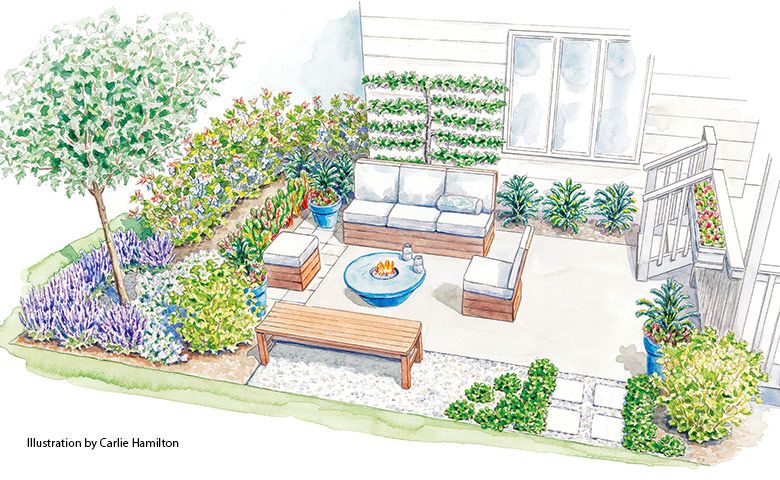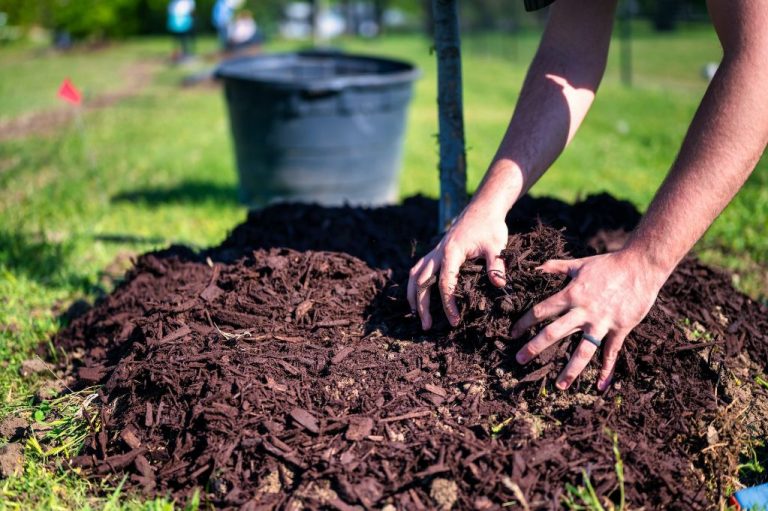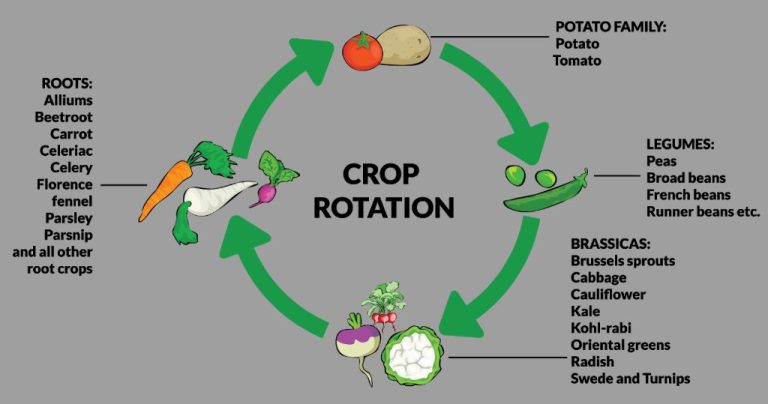Edible Garden Planning: Mapping Out Your Plantings For Success
Planning an edible garden takes time and preparation, but the benefits are well worth the effort. Careful planning can lead to higher yields, healthier plants, and a more efficient use of your garden space. According to Backyard Eats, some key advantages of planning your edible garden include:
- Saving money on groceries by growing your own fruits, vegetables, and herbs.
- Enjoying the absolute freshest produce straight from your yard.
- Getting kids interested in eating healthier foods that they helped grow.
- Reducing your carbon footprint by growing food locally.
- Building community resiliency through local food production.
Taking the time to map out your edible garden thoughtfully will ensure you maximize these benefits. This guide will walk through the key steps of planning a productive, efficient, and beautiful edible garden.
Assess Your Growing Conditions
When planning your edible garden, the first step is assessing your growing conditions. Key factors to consider are sunlight, soil quality, drainage, and wind exposure.
Most fruits and vegetables require at least 6-8 hours of direct sunlight per day. Be sure to observe sunlight patterns across your yard and select a site that maximizes sun exposure (Source 1). Positioning your garden in full sun helps plants grow strong and produce the best harvests.
Test your soil’s pH and nutrients to determine if amendments are needed. Most edibles prefer loamy, well-draining soil with a pH between 6.0-6.8. Add compost and other organic matter to improve moisture retention and nutrient levels if needed (Source 2). Healthy, fertile soil gives plants the foundation to thrive.
Good drainage is essential to prevent waterlogged roots and plant diseases. Check for compacted or heavy clay soils that may not drain well. Incorporate compost to improve drainage, or consider raised beds that allow for better aeration and drainage control.
Wind exposure can dry out and damage plants. Use fences, hedges, or garden structures to block prevailing winds if your site is very exposed. This protects delicate fruits and vegetables from harsh winds.
Choose the Right Plants
Selecting the right edible plants for your garden starts with understanding your growing conditions. Factors like sunlight, soil type and pH, wind exposure, and hardiness zone will determine what will thrive. Focus on choosing vegetables, fruits, and herbs that are suited to your local climate.
Some top options for most regions include tomatoes, zucchini, radishes, lettuce, onions, carrots, and cucumbers. For fruits, climate-appropriate choices like strawberries, blueberries, raspberries, or citrus trees make tasty additions. Classic culinary herbs like basil, rosemary, thyme, sage, parsley, chives, and cilantro are great multipurpose plants. Be sure to select the correct varieties for your growing zone.
Additionally, don’t overlook unique edible landscaping plants like artichokes, asparagus, rhubarb, or elderberries that provide form, color, and food. Dwarf and container fruit trees are also excellent choices where space is limited. Focus on native, resilient perennials to simplify upkeep and care (Source).
With smart plant selection suited to your site and climate, you’ll enjoy a thriving edible garden that keeps giving year after year.
Map Out Bed Layouts and Crop Rotation
When designing your edible garden beds, it’s important to map out the layout in advance for optimal use of space and crop yields. Rectangular beds in repeating shapes work well for large gardens, while freeform curves and edges can be used for smaller spaces. Beds should be 3-4 feet wide to allow easy access from both sides without stepping in the soil (Source). Leave ample walkways of at least 2-3 feet between beds and consider material options like mulch, gravel, or pavers.

Incorporating crop rotation into your plan is crucial for maintaining healthy soil nutrients and preventing pest or disease buildup. Crop rotation involves moving plant families to a different bed each season. Common plant family groupings are fruits/vegetables (tomatoes, peppers, eggplant), leafy greens (lettuce, spinach, kale), roots (carrots, beets, radishes), and legumes (beans, peas). Rotate these groups through your available beds year after year. Crop rotation replenishes important nutrients that different plants take from the soil, leading to improved yields over time (Source).
Plan Access and Pathways
When designing your edible garden, it’s important to plan how you will access your plants for tending and harvesting. Pathways should be wide enough for you to comfortably move through the garden with a wheelbarrow or garden cart. The average width for pathways is 3-5 feet. Wider paths (5-6 feet) are ideal for gardens with lots of traffic and wheelbarrows. Narrower paths (2-3 feet) can work well for small gardens. Consider the following for access:
- Layout pathways in logical routes for easy access to all beds and plants.
- Use curved, meandering paths for visual interest.
- Mulch paths well to prevent mud.
- Place frequently accessed plants near main paths.
- Allow room to move around tall crops like tomatoes or corn.
- Make sure paths circumnavigate the entire garden perimeter.
- Connect growing areas to shed, compost, and water access.
Edible gardens should be as easy to navigate and work in as possible. Well-planned access and pathways will make tending and harvesting your crops a pleasure rather than a chore.
Prepare Soil for Planting
Proper soil preparation is crucial for growing a successful edible garden. The ideal soil is loose, crumbly, and rich in organic matter. To get your soil into optimal condition, focus on improving drainage and incorporating organic material.
To improve drainage, add compost which allows water to infiltrate more easily into the soil rather than running off the surface. You can also add materials like perlite, vermiculite or peat moss to help aerate clay soils and retain moisture in sandy soils. According to the University of Wisconsin-Madison, incorporating 2-4 inches of organic matter into the existing soil is ideal for preparing a new garden bed (https://hort.extension.wisc.edu/articles/beginning-vegetable-garden-basics-site-selection-and-soil-preparation/).
Sources of organic matter include compost, composted manure, peat moss, shredded leaves, grass clippings or straw. The Family Handyman recommends mixing in at least 25% compost by volume when preparing garden soil (https://www.familyhandyman.com/list/how-to-prep-soil-for-a-vegetable-garden/). Organic matter feeds beneficial microbes, retains moisture, and provides nutrients for your plants.
Designate Planting Zones
When planning your edible garden, it’s important to designate specific planting zones based on crop type and ideal growing conditions. Mapping out planting zones allows you to optimize your garden layout and crop rotations.
Group plants with similar needs together in designated beds or rows. For example, make zones for cool weather crops like spinach, lettuce, radishes that can handle cooler temps and frost. Plant these in early spring and fall. Then make separate zones for warm weather crops like tomatoes, peppers, squash that require warmer soil and air temperatures. They should go in the garden later in spring through early summer.
Also consider sun exposure needs. Place plants that thrive in full sun, like tomatoes and peppers, in the sunniest spots. Reserve partially shaded areas for more shade-tolerant crops like lettuce and cabbage.
Proper zoning will help you match the unique needs of each vegetable and herb, ensuring they grow and produce at their best throughout the seasons.
Allow Space to Grow
Proper spacing is crucial for healthy plant growth in an edible garden. When planting seeds or transplanting seedlings, be sure to follow recommended spacing guidelines.
Most vegetable plants need sufficient space to expand their roots and foliage. Overcrowding plants can result in stunted growth and reduced yields. Leafy greens like lettuce and spinach can be planted more densely, around 6 inches apart. But fruiting crops like tomatoes, peppers, and squash need more breathing room, often 18-36 inches between plants. Vining crops like cucumbers and melons require wider row spacing, up to 48-60 inches.
When planting herbs, follow general spacing recommendations. For example, basil does best with about 12 inches between plants. Parsley and cilantro need around 6-8 inches. And thyme and oregano only require 10-12 inches between plants. Just check seed packets or plant tags for variety-specific guidelines.
Consider plant size at maturity when spacing your edible garden. Room to grow allows air circulation around plants, reducing pest and disease issues. It also makes harvesting easier when plants aren’t crammed together.
In addition to proper horizontal spacing between plants, allow enough space between rows. Wider rows give adequate aisle space for weeding, pruning, and harvesting your crops. Pathways of 12-24 inches are common.
With good spacing, your plants will thrive and produce a bountiful edible garden harvest. Just be sure not to plant too far apart—make the most of your growing area by efficiently filling beds and borders with your tastiest edible plants. For detailed spacing guidelines by vegetable, herb, and flower, check out resources like this plant spacing chart.
Schedule Seasonal Care
Gardening is not a set-it-and-forget-it endeavor. To keep your edible garden thriving, you’ll need to provide regular care and maintenance throughout the growing season and beyond.
Set up a monthly schedule to ensure your crops get the care they need. Key seasonal care tasks include:
Watering
Vegetables need about 1-2 inches of water per week, either from rain or irrigation. Install drip irrigation or hand water beds regularly, aiming for deep weekly soakings rather than frequent shallow sprinklings (Gather and Grow). Adjust watering based on weather, plant size, and soil moisture.
Fertilizing
Replenish nutrients in soil by applying organic fertilizers according to package directions. Compost and compost tea also feed plants. Test soil annually and amend as needed.
Pruning
Prune off dead or damaged growth. Prune excess foliage on fruiting plants to open them up to sun and air circulation. Pinching back tips promotes bushier growth on some plants.
Weeding
Stay on top of weeds, which compete for water and nutrients. Mulch helps suppress weeds. Hand pull weeds or hoe shallowly to remove young weeds.
Pest Management
Check for signs of disease and pests. Remove infested plants. Use organic sprays as a last resort. Beneficial insects and birds help control pests.
Season Extending
Utilize techniques like cold frames, hoop houses and fabric row covers to lengthen your harvest. Plan autumn, winter and early spring plantings (Portland Edible Gardens).
Enjoy Your Bounty!
After months of planning and tending to your garden, the best part is finally getting to enjoy the fruits (and vegetables) of your labor. Proper harvesting and preservation techniques will help you make the most of your edible bounty.
Harvest produce at its peak ripeness for best flavor. Check seed packets for days to maturity and optimal picking times. Harvest in the cool morning hours when crops are crisp. Use clean, sharp tools to cut produce from the plant rather than pulling and risking damage. (Source).
Preserve your surplus produce to enjoy year-round. Freezing, canning, dehydrating, and fermenting are common methods. Blanch vegetables before freezing to stop enzyme action. Process canned goods in a pressure canner for shelf-stable storage. Store dehydrated foods in airtight containers. Follow trusted recipes when fermenting. With careful planning, you can harvest all season long.
Incorporate your homegrown produce into recipes and meals. Try new varieties you can’t find at the store. Share the bounty with family and friends. Entering your prize vegetables and herbs in a county fair is a fun way to show off your gardening skills. Most importantly, take pride in the delicious, nutritious foods your edible garden provides.






